The neck is an area particularly prone to aging as neck skin is thinner than facial skin, and it has fewer oil and sweat glands than the face, which limits its ability to stay moisturized and slow the effects of aging. People concerned about an aging neck often wonder when a surgical neck lift will be appropriate. I’ll discuss the different ways aging affects the neck, the different treatments that can improve neck appearance, and the conditions when a surgical neck lift is appropriate.
I perform full surgical neck lifts, often combined with an extensive facelift such as a deep plane facelift. I also perform cosmetic neck surgery such as platysmaplasty for protruding neck bands, minimal neck surgical procedures such as suture suspension, and non-surgical neck treatments to improve skin quality and volume in the neck area.
Neck Lift Before and After
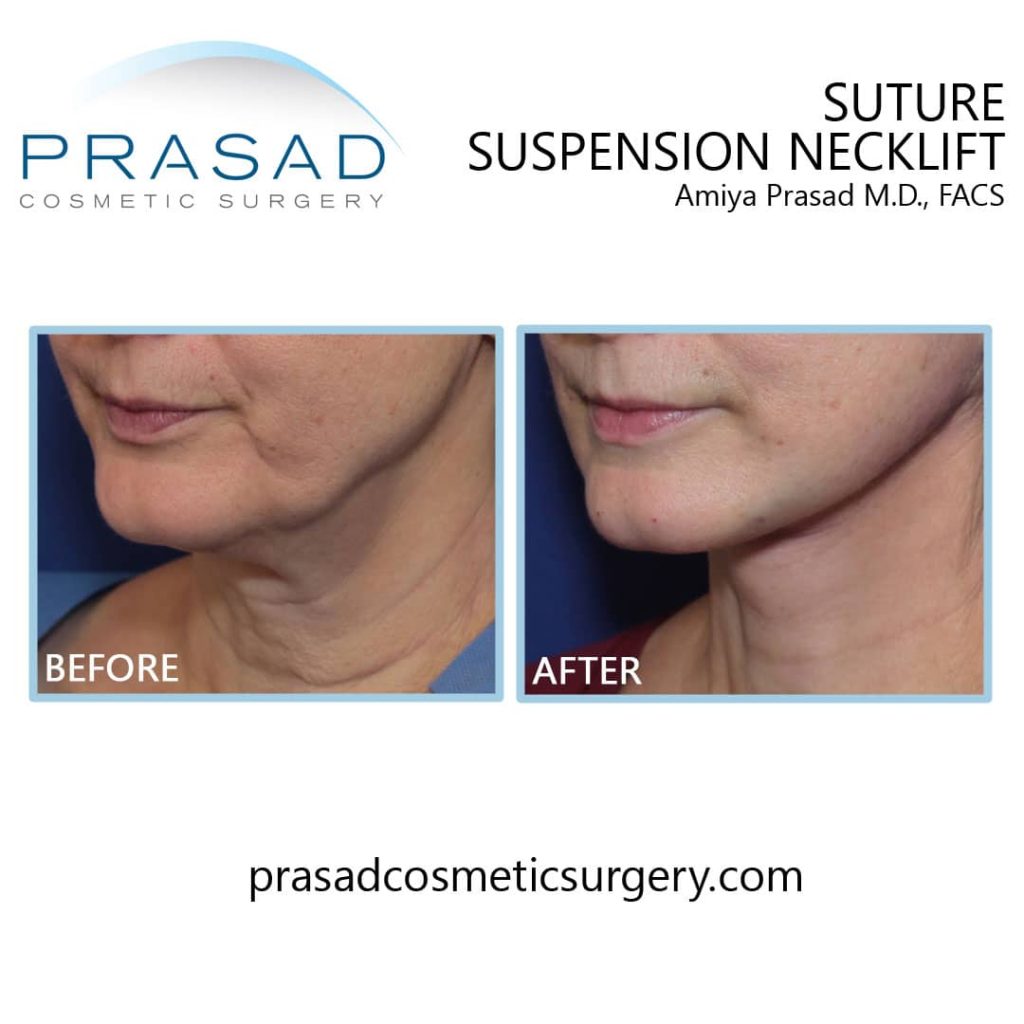
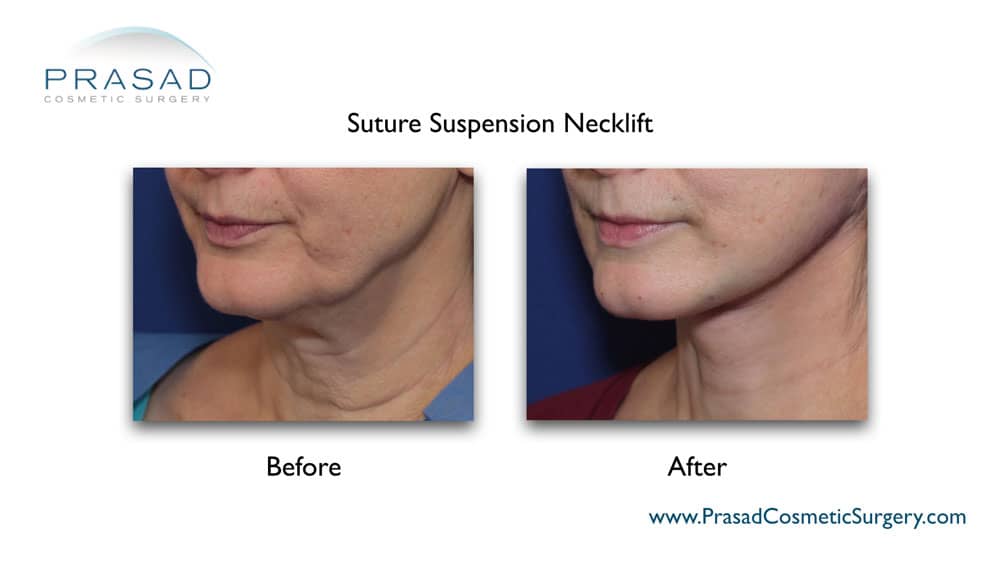
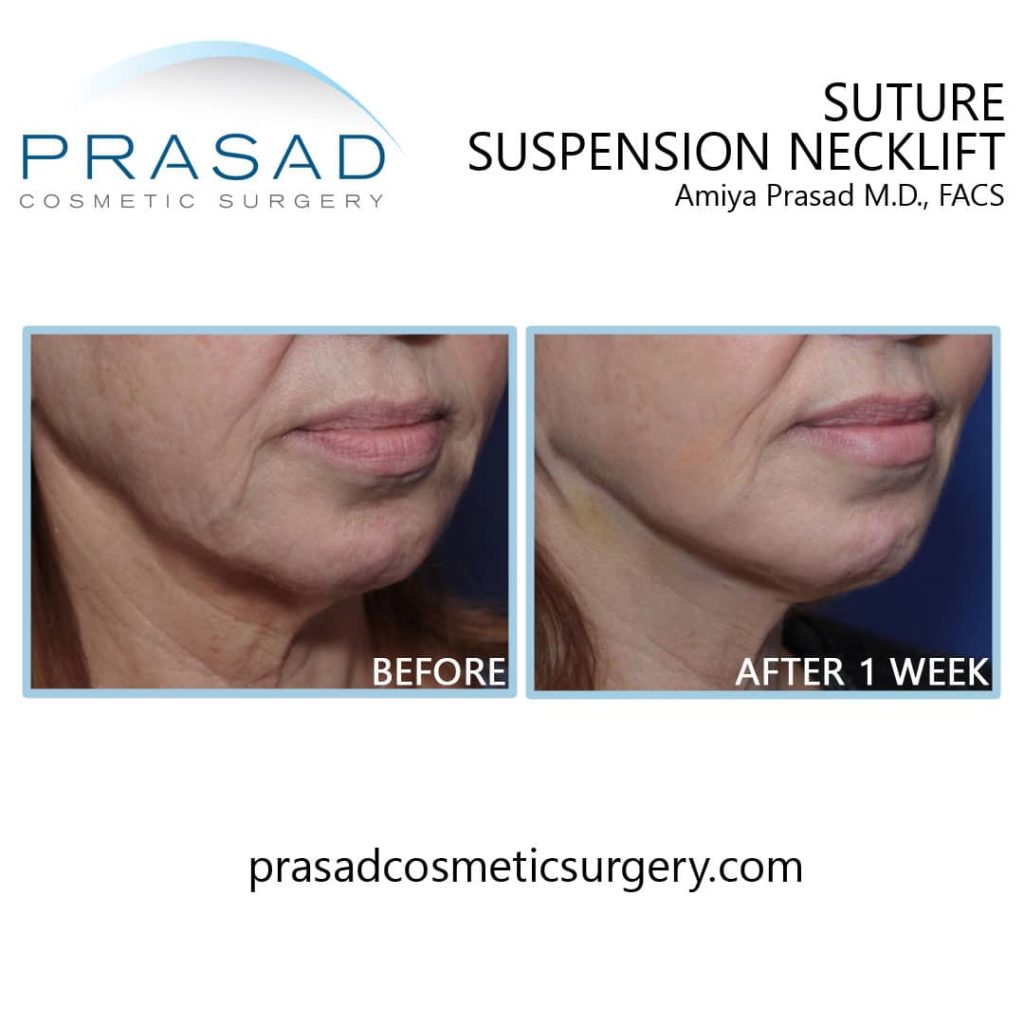
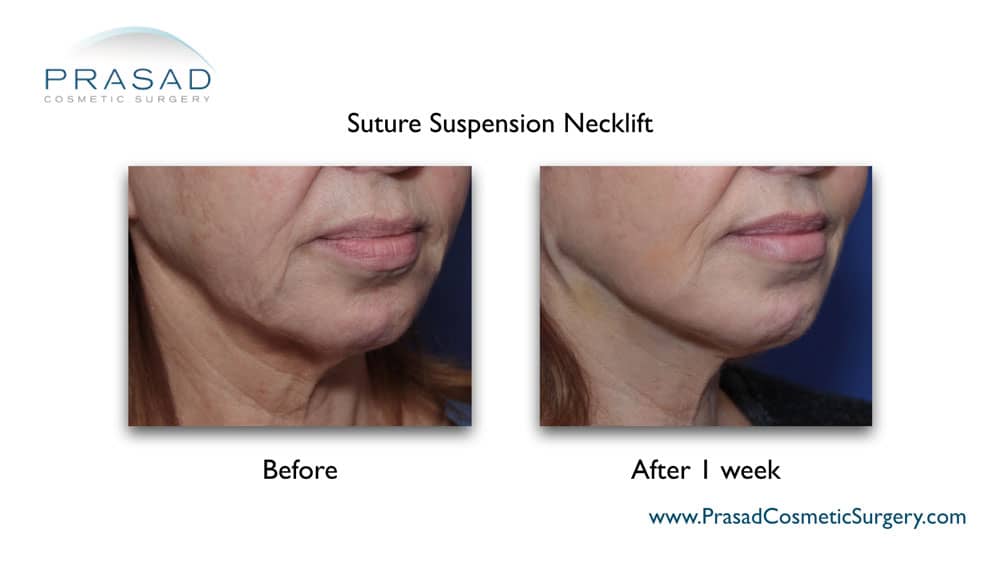
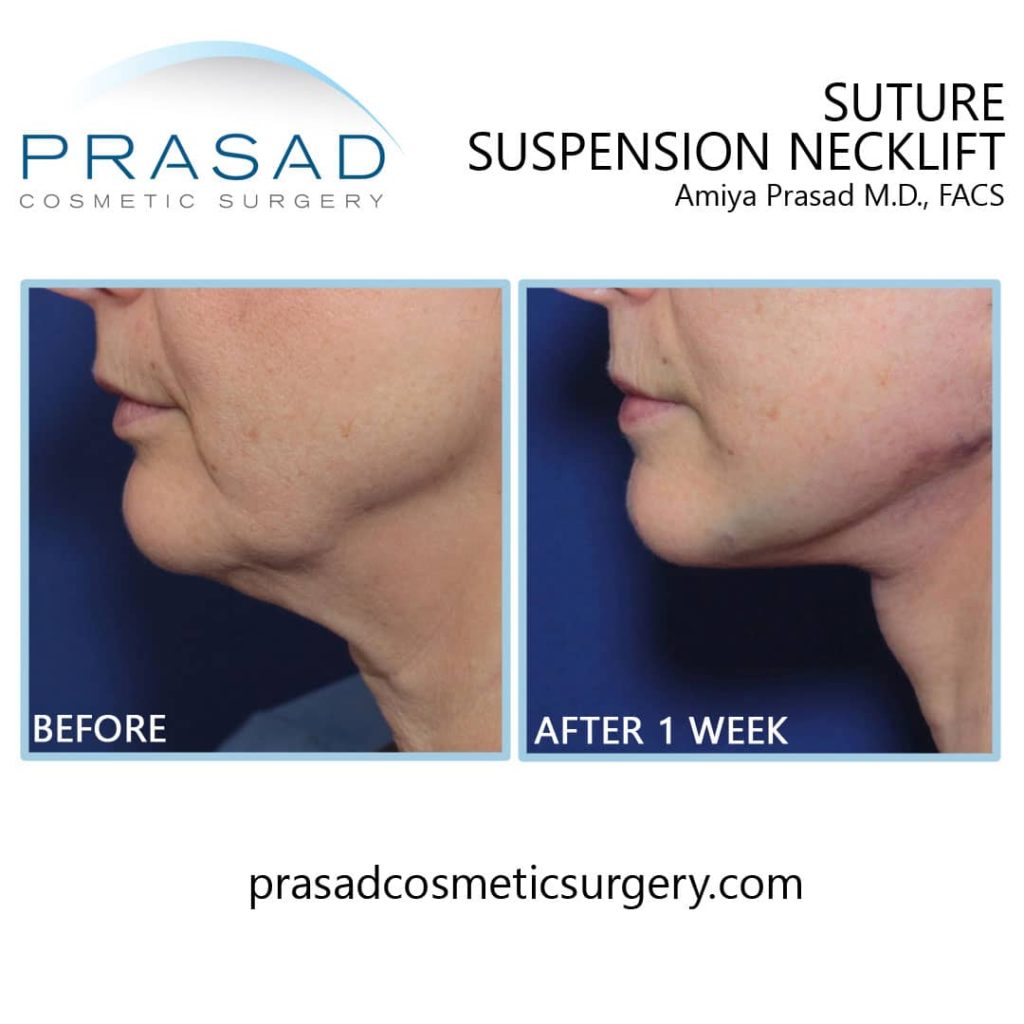
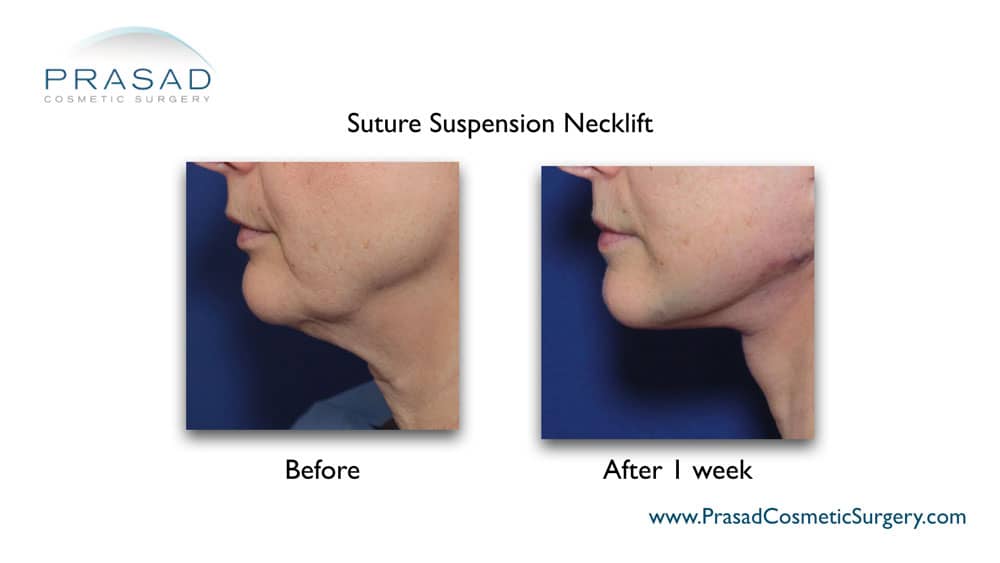
Generally speaking, surgical neck lifting is for more advanced aging in the neck area. Several neck procedures can be done before the need to surgically lift the neck, and the need for excising redundant to stretched neck skin. Before any neck procedure, I perform a comprehensive examination of the neck, which includes:
- Neck skin thickness
- Absence or presence of fat
- Amount of excess neck skin, if any
- The elasticity of neck skin
- Protrusion of platysmal bands
- Assessment of facial volume loss, particularly the cheeks, chin, jawline, and jaw angle
The first thing I assess is the thickness and quality of the neck skin. As mentioned earlier, neck skin is thinner than facial skin, and doesn’t have as many oil and sweat glands as the face, so it’s not as naturally moisturized, and does age at a different rate. If the neck skin has thinned, and skin quality is reduced, but there isn’t significant sagging, it is too early to have a surgical neck lift. What can be done at this stage is to improve the quality and thickness of neck skin using non-surgical treatments.
Neck Lift without Surgery
The least aggressive treatment to improve skin thickness and quality, while stimulating the body to generate collagen is with platelet-rich plasma or PRP. Platelet-rich plasma is made up of the concentrated wound healing and growth factors in a person’s blood, which are responsible for healing injuries like cuts to the skin. We prepare PRP with a routine blood draw from the patient, the same as a blood test. PRP is prepared by spinning the blood in a centrifuge to concentrate the platelets into a yellow serum that is separated from the dark red blood cells.
When the serum is injected into the neck skin, these wound healing and growth factors can help thicken the skin, and improve skin quality, texture, and appearance. PRP may take more than one treatment session for best results, but since it improves the overall health of the skin, it doesn’t fade like a filler, but it also doesn’t stop the aging process.
I also apply PRP to the neck without an injection using a device we call the Skin Booster. This device can be loaded with PRP, and often with hyaluronic acid to improve moisture retention of the skin, creates microchannels in the skin for the absorption of PRP and hyaluronic acid, and requires no downtime.
Non Surgical Neck Lift Before and After
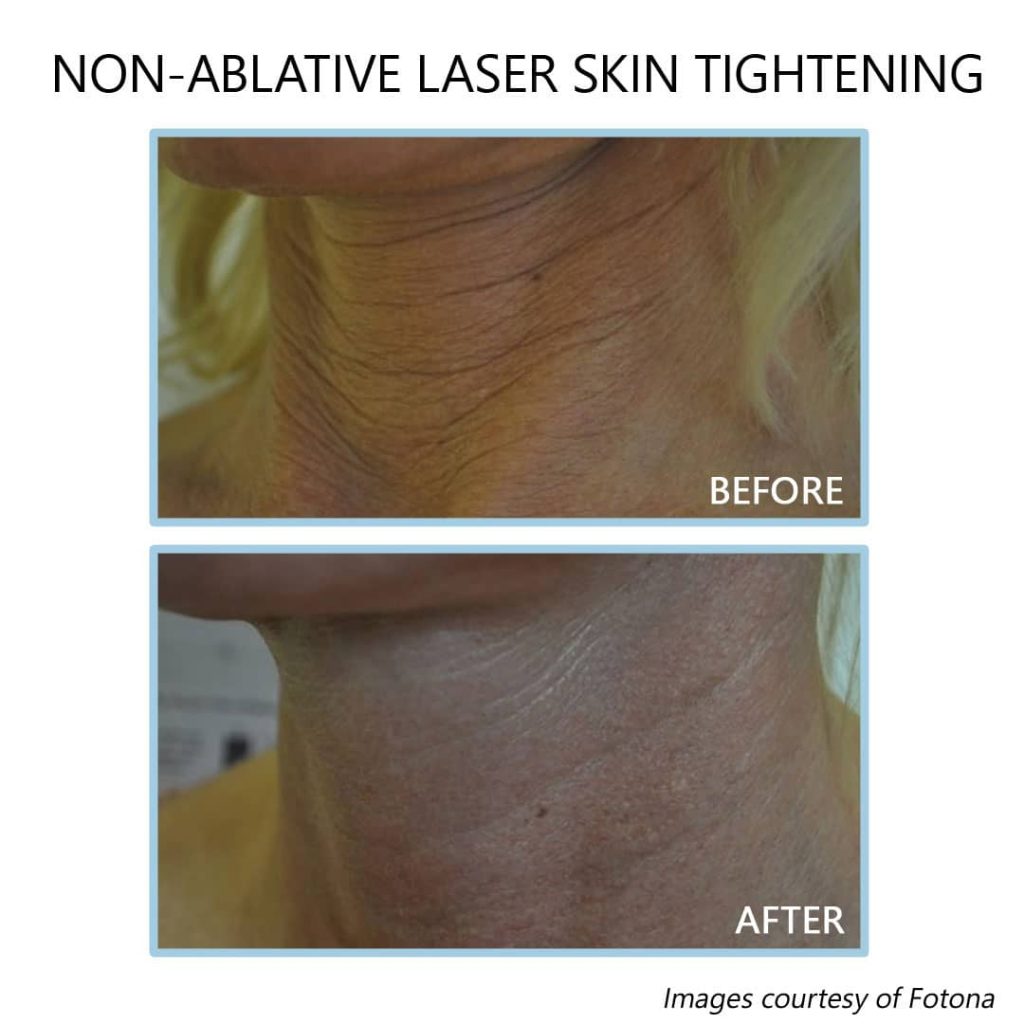
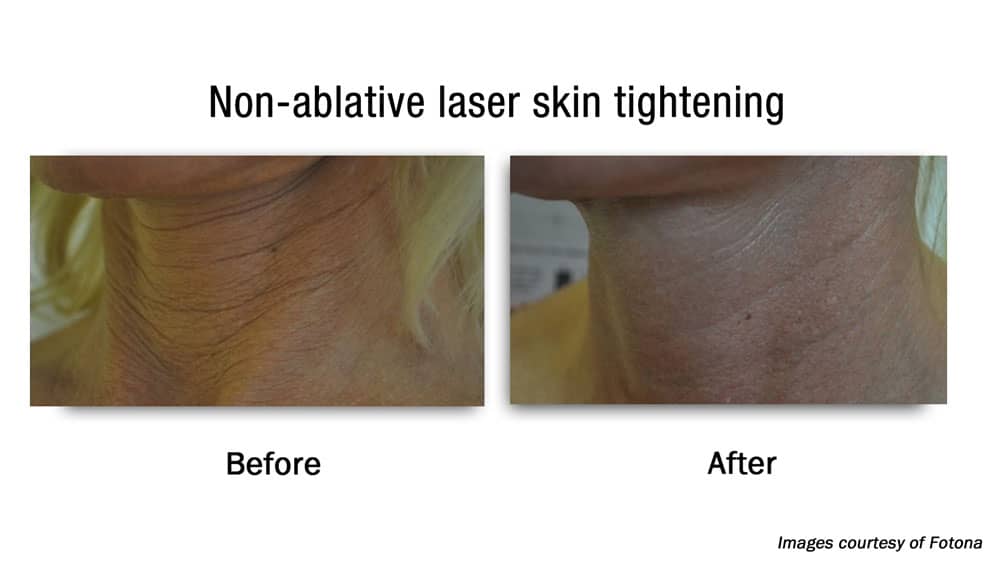
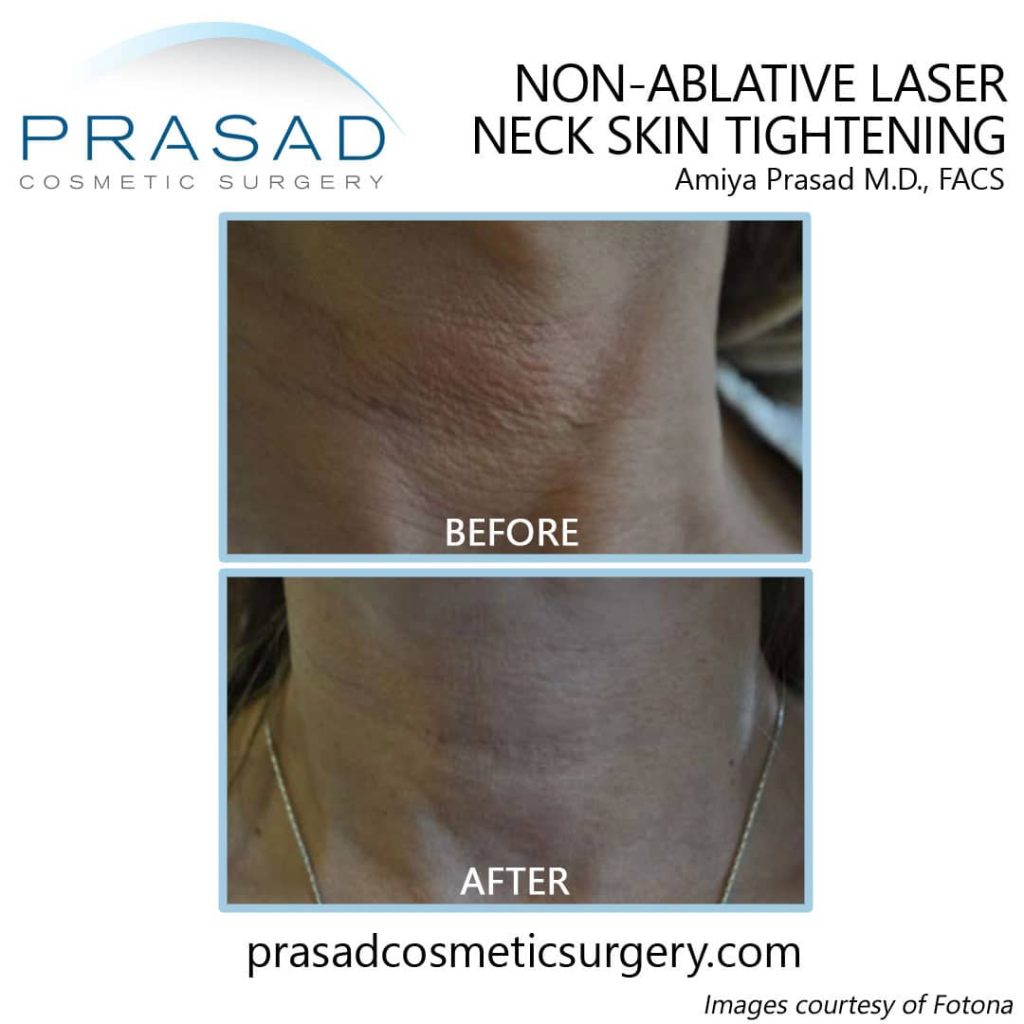
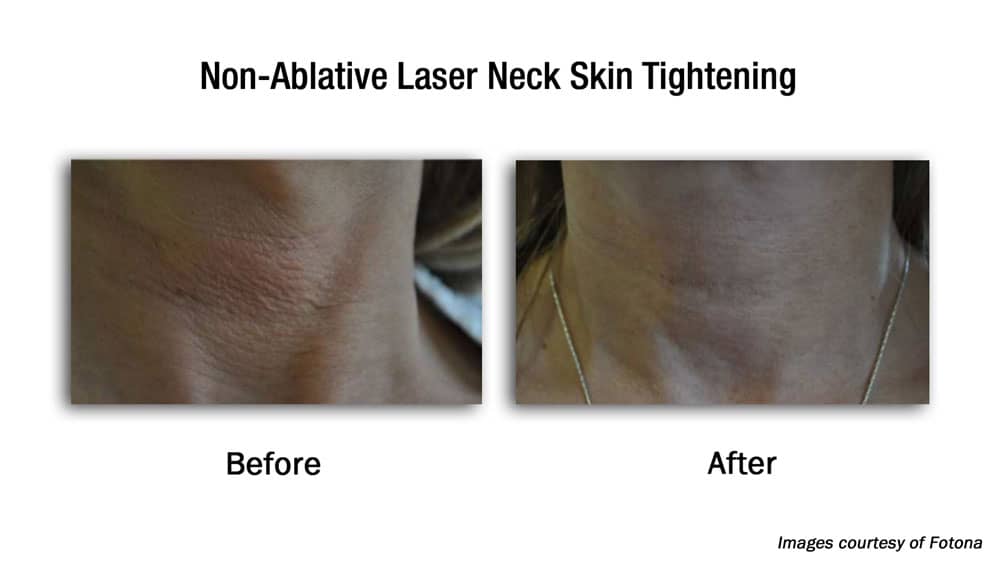
Laser Neck Rejuvenation
People who want to treat deeper lines or wrinkles on their necks, but still don’t have significant skin laxity, can opt for non-surgical laser skin tightening, which is often combined with PRP treatment. Lines and wrinkles in the neck are also due to diminishing skin quality, especially in the backbone of the skin known as the dermis. Thermal devices such as lasers or radiofrequency use heat to make the neck skin contract, making lines and wrinkles appear less deep. Heating to a certain temperature, and with enough exposure causes the body to recognize heat as an injury, so it responds by generating collagen for healing, which strengthens and thickens the skin as collagen is the protein that binds the skin to give it its strength and suppleness. The heat from a laser device can also be used to remove the top layer of skin, which is called ablation, so a fresh layer of skin can grow in. Ablation or partial ablation of the top layer of skin is called skin resurfacing as it helps with uneven skin texture.
Since the neck is almost a part of the face, facial aging can affect neck appearance. One of the earliest signs of facial aging, even before significant skin laxity and descent, is facial volume loss. Volume loss is diminishing bone, muscle, fat, soft tissue, and even skin volume and thickness in the face. Volume loss in the chin can cause a loss of forward projection, which can cause the appearance of sagging in the neck. Volume loss along the jawline and jaw angle can also affect neck appearance as continuity and definition are lost. Enhancing volume at the chin to restore forward projection, as well as the jawline and jaw angle for restoration of continuity and definition can improve the appearance of the neck, particularly under the chin where volume loss can appear to make neck skin sag prematurely.
There is a limit to how much lasers can tighten the skin. While facial volume loss starts becoming more significant in the 40s, eventually skin in the neck will become lax and start to sag. It is with significant laxity that a surgical neck lift can be considered, but sagging neck skin does have varying degrees of laxity.
Neck Lift Surgery
Before an extensive neck lift is required, relatively minor skin laxity that cannot be safely treated with non-surgical skin tightening, or is too much to treat with volume enhancement in the face can be treated with a minimally invasive surgical procedure called a suspension suture, or suture suspension neck lift. A suture suspension is not a thread lift, as that procedure only lifts and tightens the neck skin using barbed sutures. The suture suspension procedure uses the same sutures as an extensive neck lift surgery, which are placed in the tissue and skin under the neck to lift and tighten loose tissue, but unlike a full neck lift, no skin is excised. Lifting and tightening the deeper tissue as well as the skin ensures that the results of this procedure last longer than a thread lift. A suspension suture procedure usually lasts about 2 years.
Platysmaplasty- Neck Band Surgery
An atomic feature of the neck that can come loose and protrude are the platysmal bands. The platysma muscle is a long, vertical muscle from the base of the neck, to under the chin. Normally the platysma muscle is flat against the contour of the neck, but with aging, it can come loose and become prominent. If the platysma muscle only becomes visible with certain facial movements like expressions, and there is no skin laxity, it can be treated non-surgically with a neurotoxin like Botox to relax the muscle so it doesn’t jut out so visibly with movement. If the platysmal bands are too loose for treatment to relax the muscle, a surgical procedure is needed called a platysmaplasty to tie the bands and bring them closer to the neck.
If there is loose neck skin at the same time, then excising some neck skin may be needed. A platysmaplasty can be a standalone procedure, or done with a more extensive neck lifting procedure. Extensive surgical neck lifting is often done at the same time as a facelift, but can be done in isolation as well. Surgical neck lifting is needed when there is significant skin laxity in the neck.
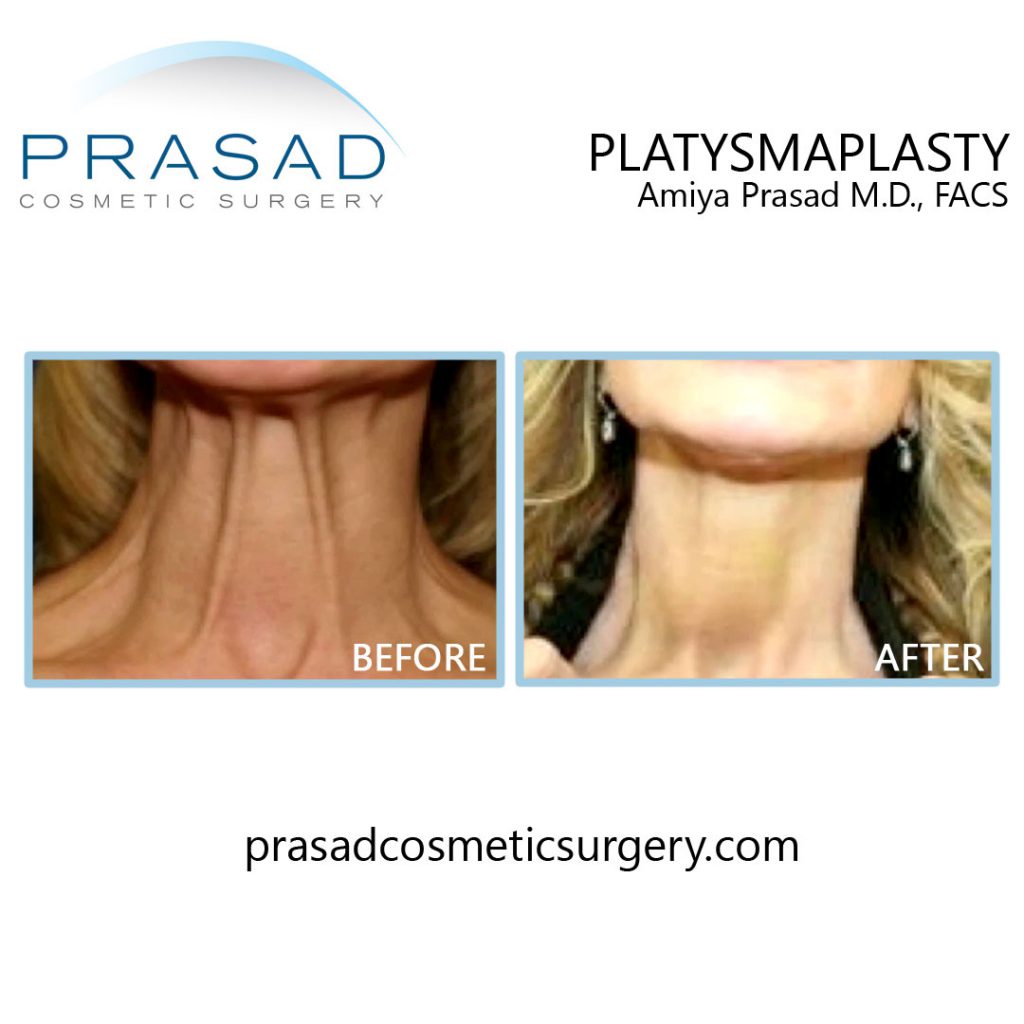
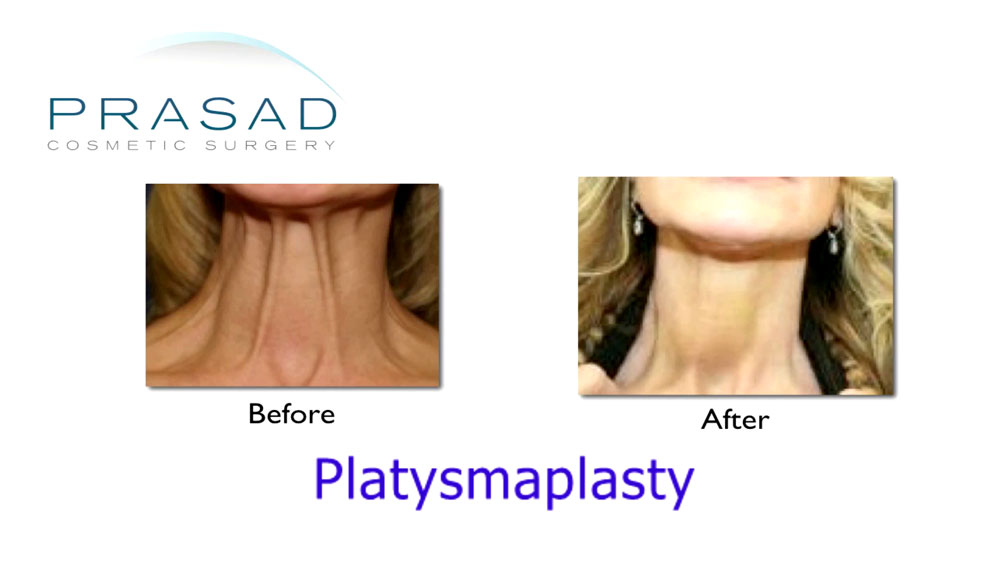
Face and Neck lift
Since the neck doesn’t age in isolation, oftentimes neck lifting is done at the same time as a facelift. While facelifts are a category of surgical procedures, with differences being the extensiveness of surgery depending on the age of the patient, all types of facelifts, from the short scar mini lift for younger patients usually in their 50s, to the more involved deep plane facelift, all lift and tighten the neck along with the face. Facelifts involve a long incision on the face where the skin is tightened, excised, and redraped, and also for access to the underlying muscle and soft tissue for repositioning and tightening.
This incision is usually along the temple and runs along the hairline for more extensive facelifts for older people. The incision always continues along the ear or the sideburn or the ear. The incision extends along the front of the earlobe for less extensive facelifts, but when it goes around the earlobe, and along the hairline behind the ear, this is more extensive face and neck lifting. It is when the skin is tightened behind the ear that the neck skin is lifted, with excess skin trimmed before redraping and closing with a suture. If an isolated neck lift is done without a facelift, the incision is only behind the ear and along the earlobe to lift and tighten the neck skin, and underlying muscle and soft tissue of the neck.
Face and Neck Lift Before and After
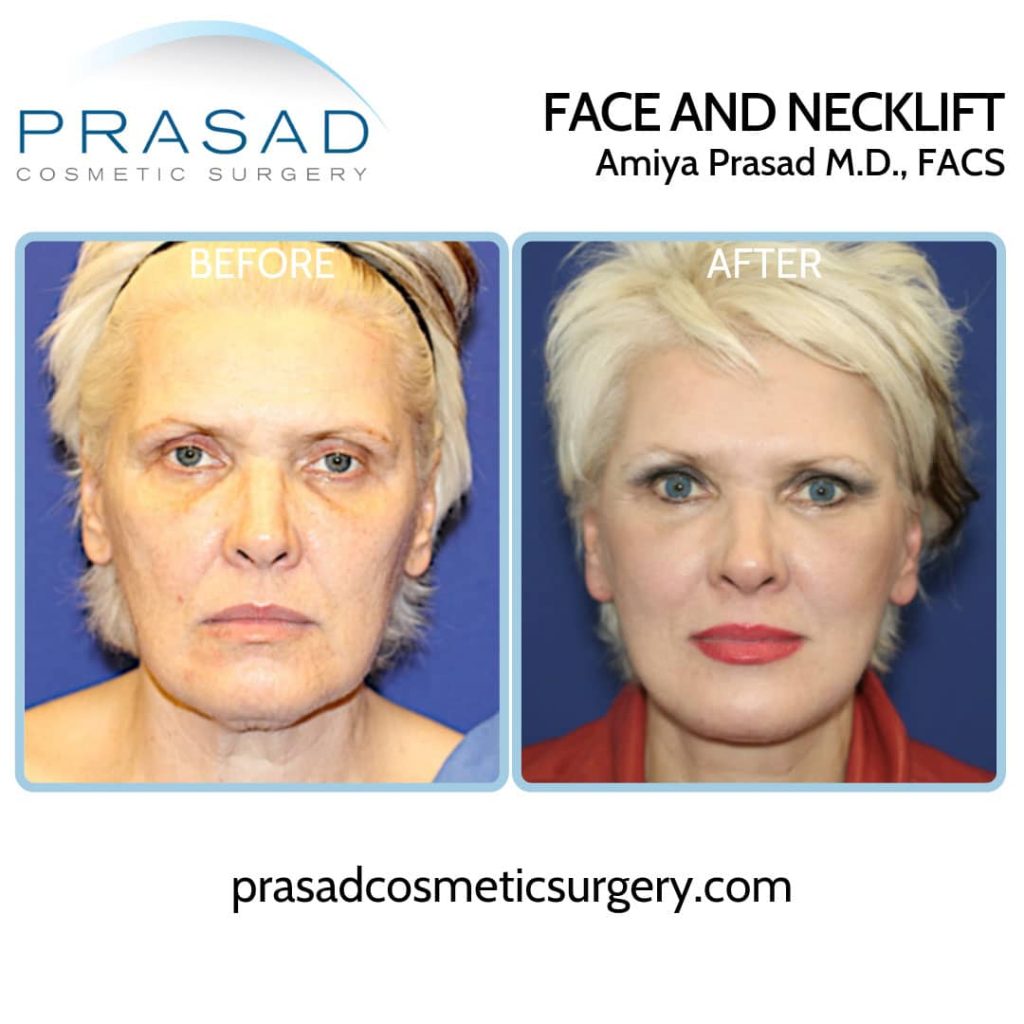
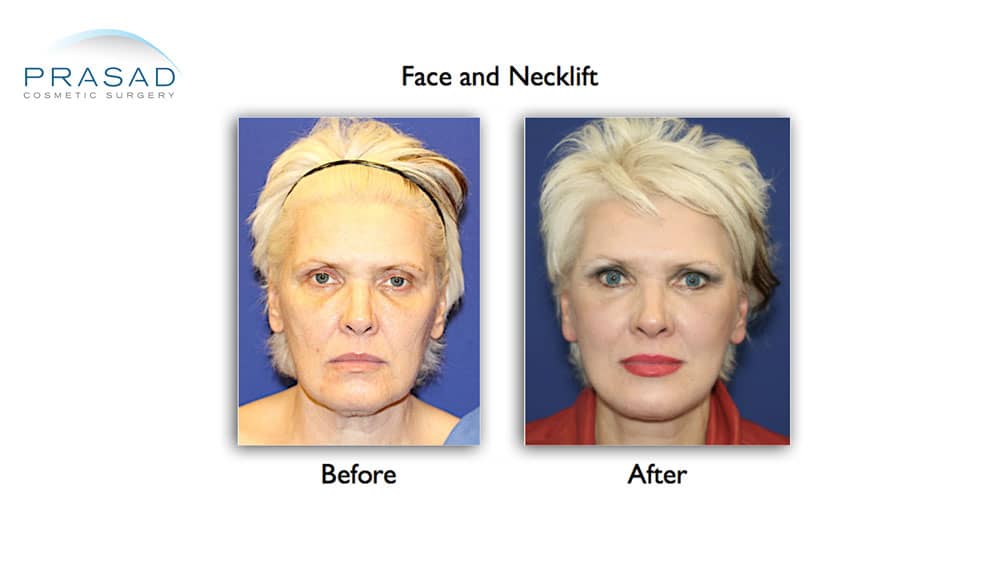

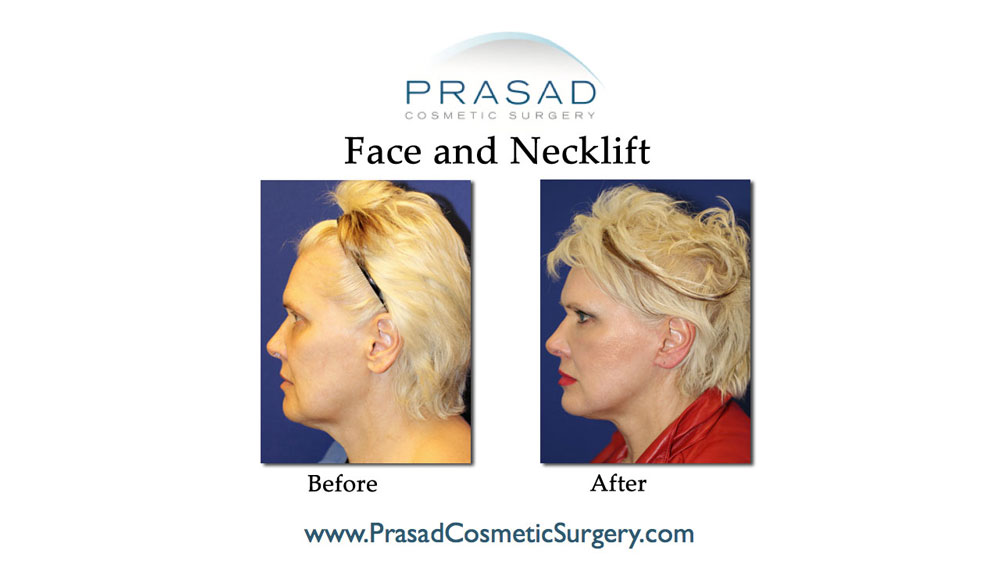
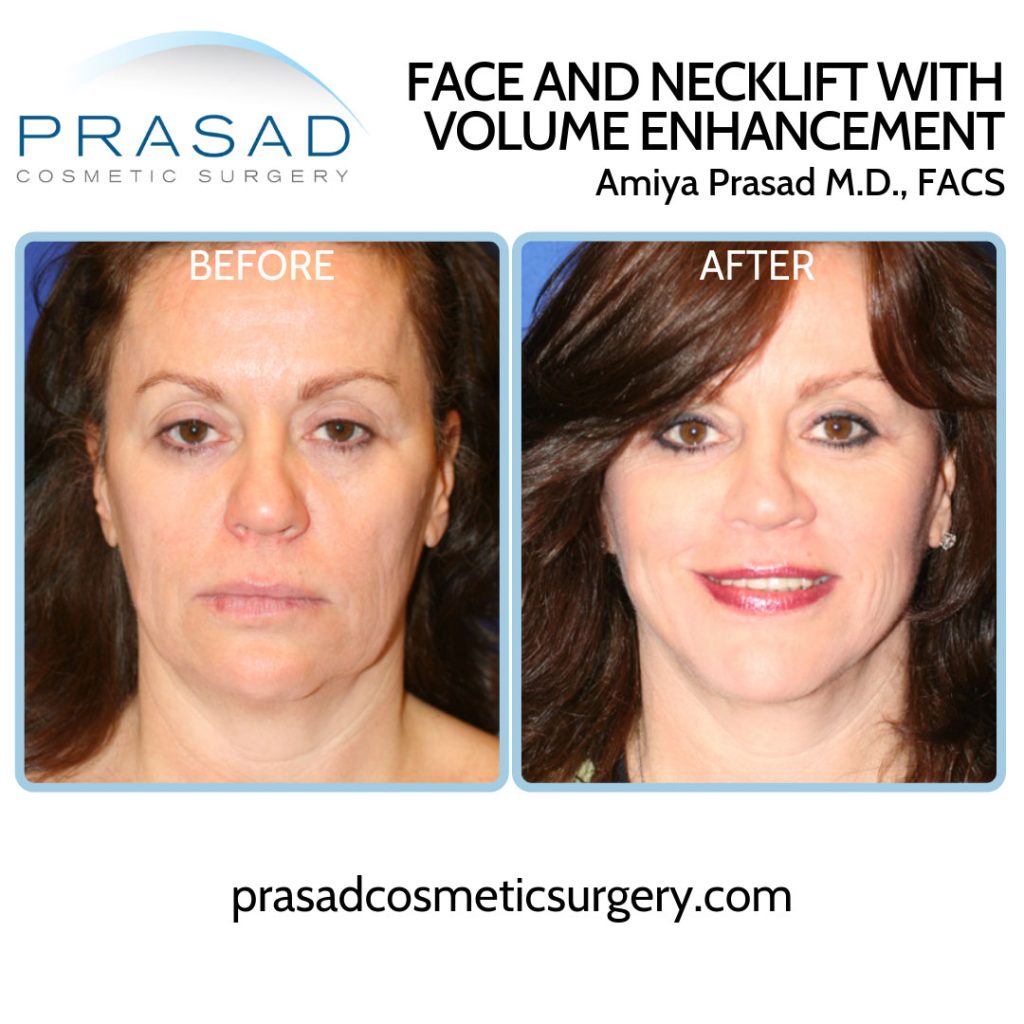
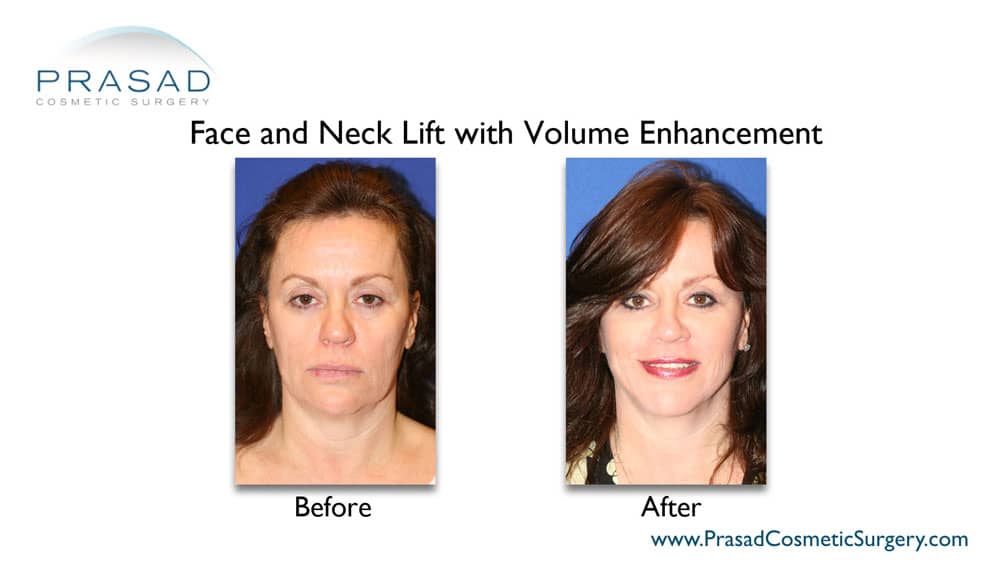
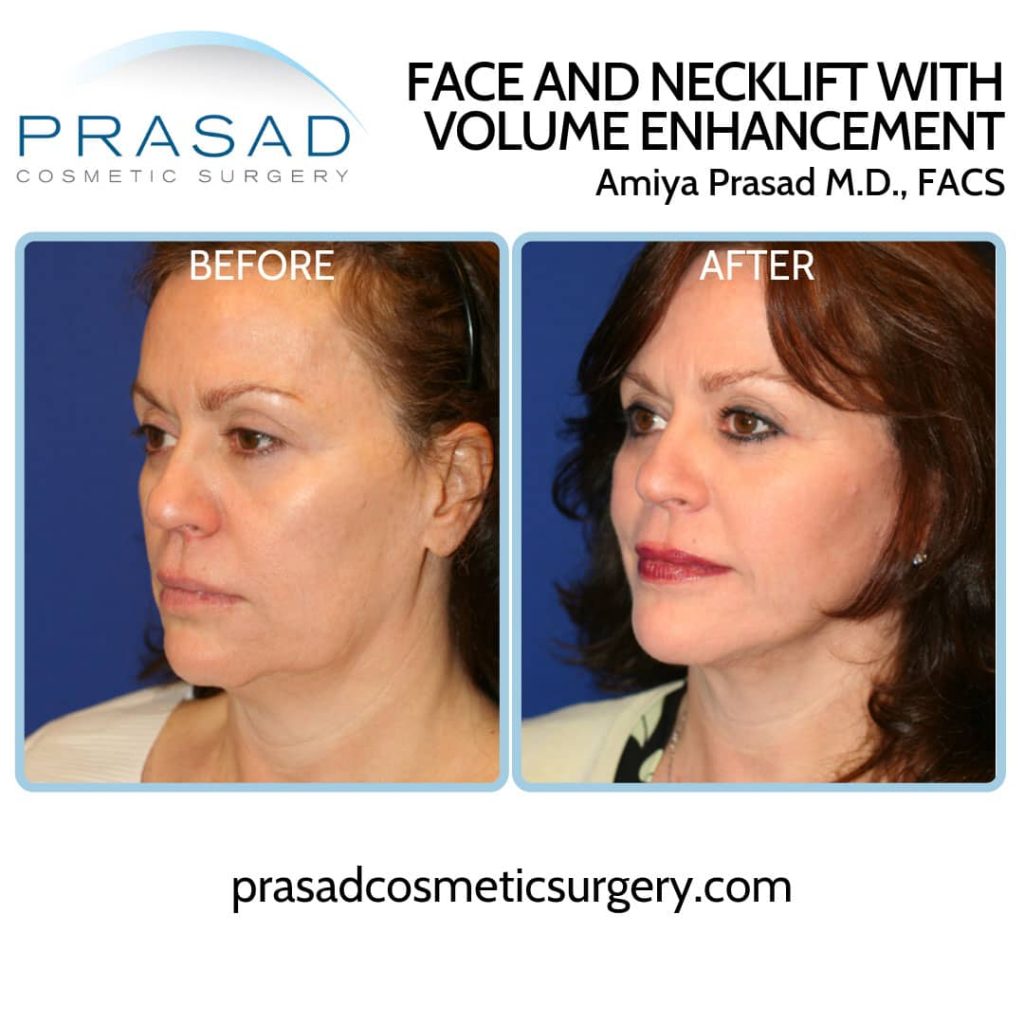

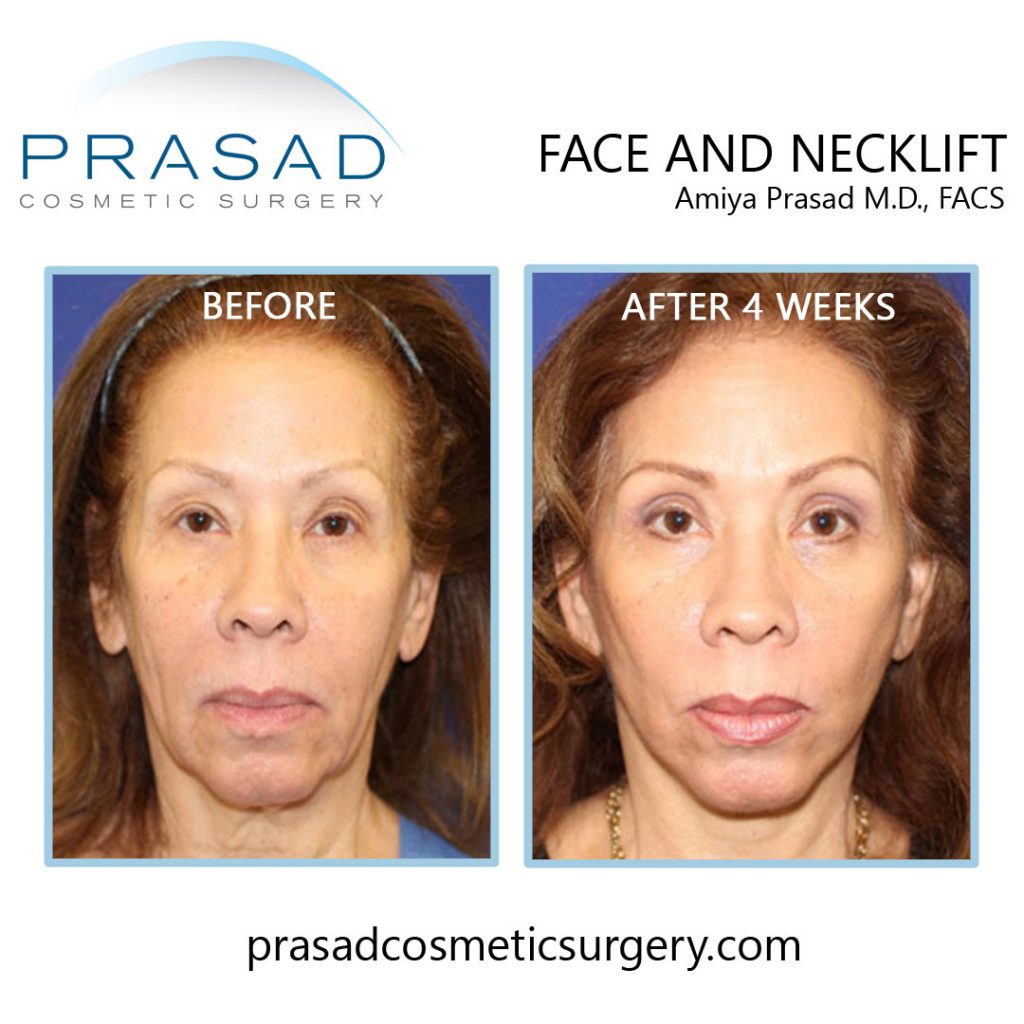

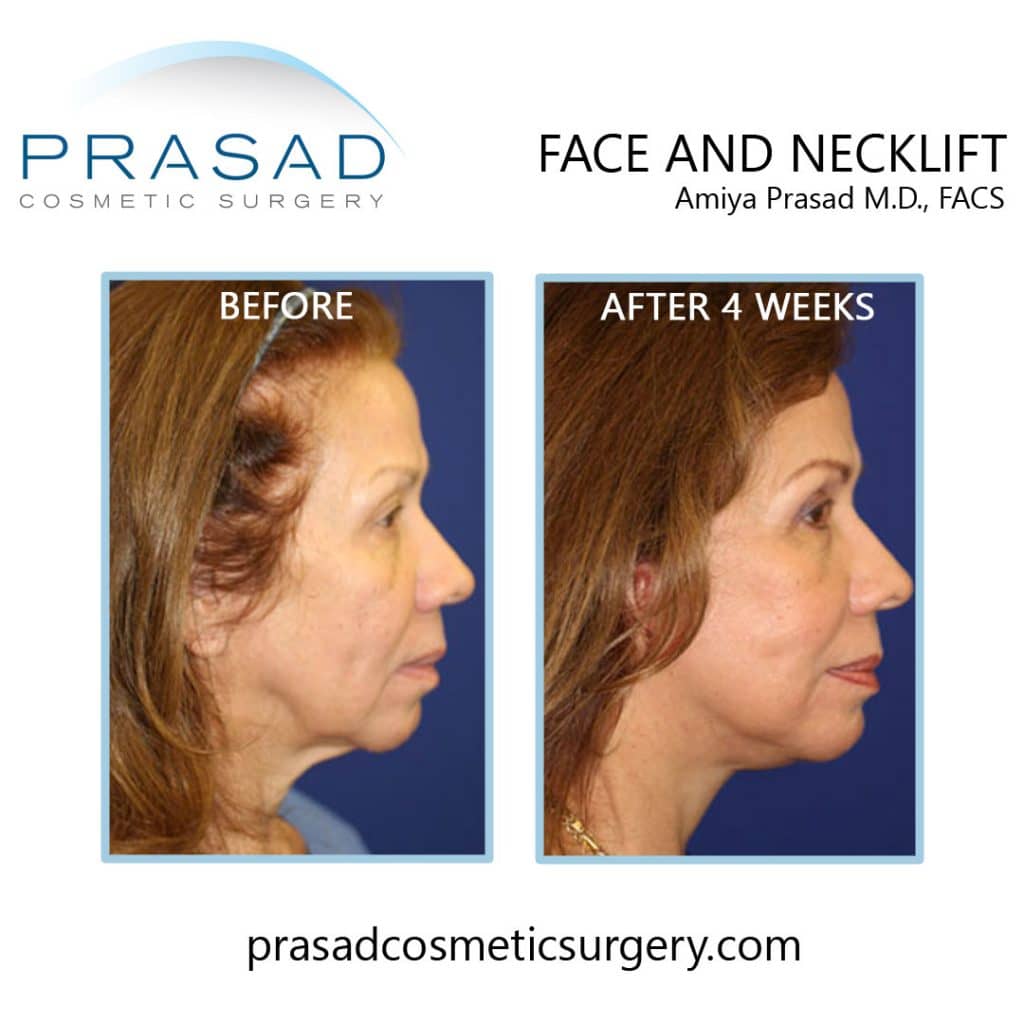
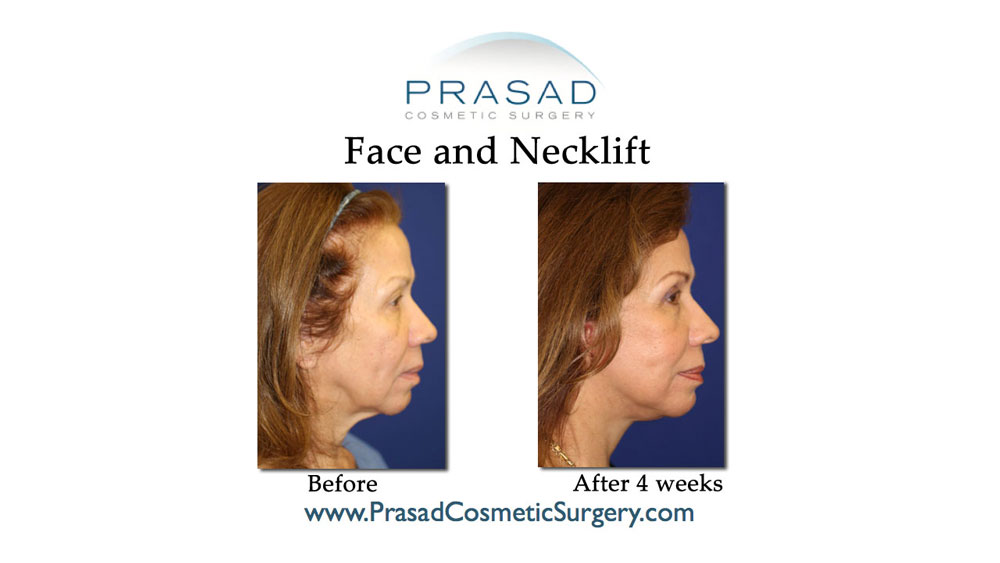
Neck Lift Recovery

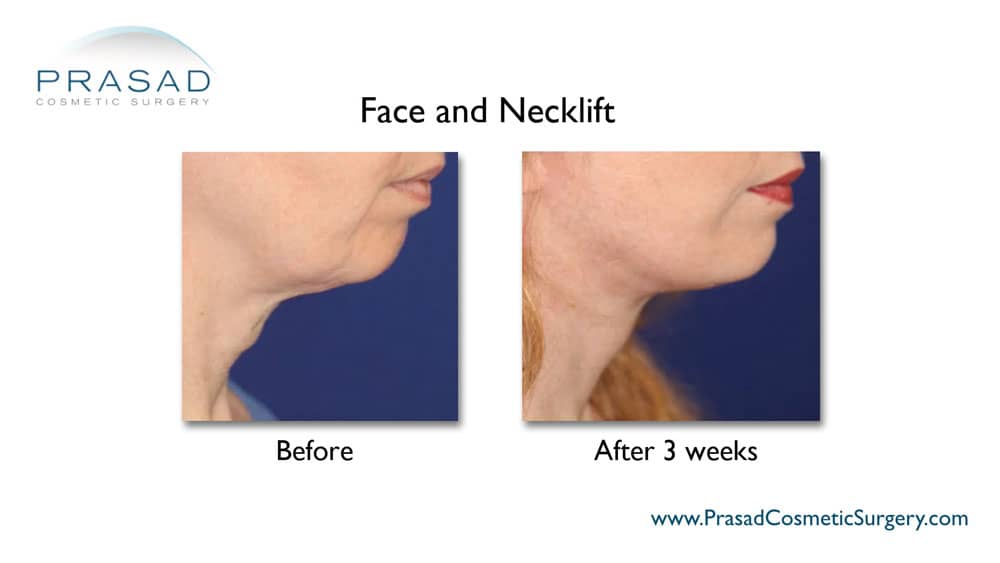
What is the best neck tightening procedure?
Surgical neck lifts should only be considered for advanced aging when neck skin, muscle, and soft laxity become a significant issue. Diminishing neck skin quality causing lines and wrinkles can be treated non-surgically, and surgical lifting does start with the minimally invasive suture suspension lift when laxity is still moderate, and surgical lifting and repositioning of soft tissue, muscle, and of course skin does progress in extensiveness depending on age and severity of sagging.
Neck Lift Manhattan NYC and Garden City, Long Island New York
Dr. Amiya Prasad is a Board Certified Cosmetic Surgeon and Fellowship Trained Oculoplastic Surgeon. He’s been in practice in New York City and Long Island for over 25 years. To schedule a consultation, contact any of our offices or fill up the form below.
